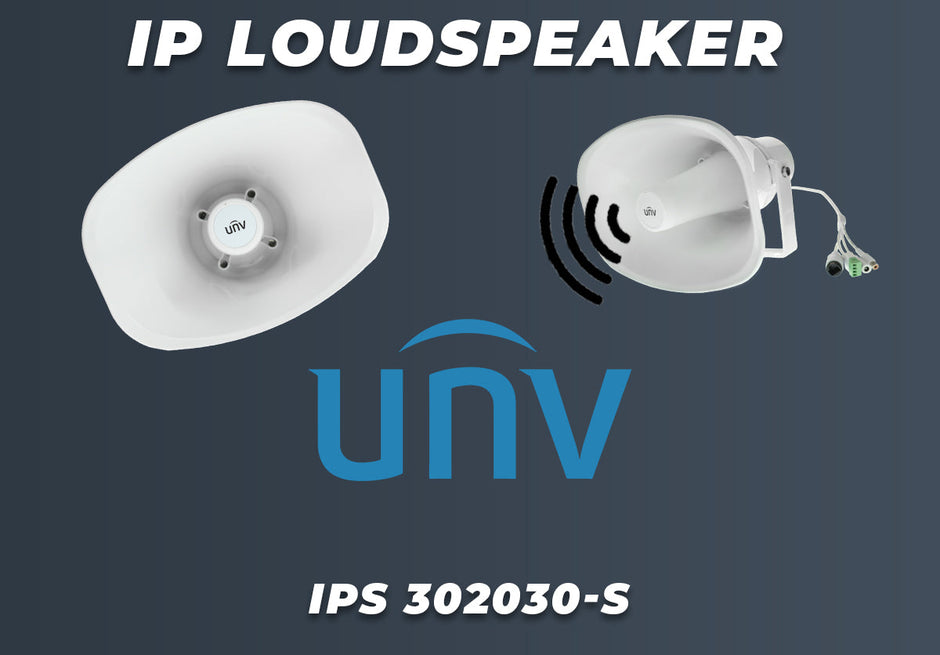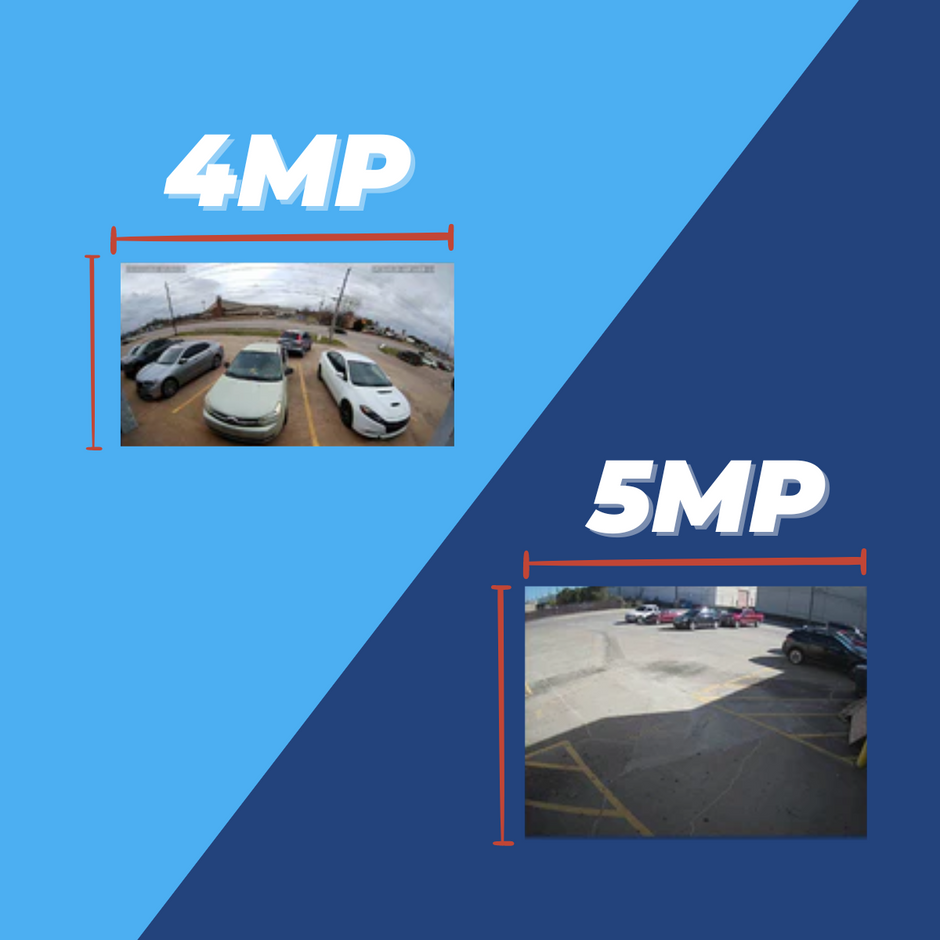One of the most important features of a security camera is its durability. Often times security cameras are installed outside in the elements, in vandal-prone areas, or in other harsh environments. How can you tell if your security camera is able to withstand whatever comes its way? There are two main specs that we’re concerned with here: IP ratings and IK ratings.
In short, an IP rating is a measurable standard that tells us how protected a security camera is from its environment, both in terms of solids and liquids. The IK rating, on the other hand, is a measurement of how much impact a camera can take. These are not subjective numbers, but are standards based on actual measurements and standardized tests. This is helpful because we’re not just comparing cameras to other cameras or giving a general, subjective sense of its protection, but we can have hard data to help us make an informed decision when purchasing a security camera.
What is an IP Rating?
In this context, IP stands for “Ingress Protection.” The IP rating tells us how protected a camera is from its external environment. By looking at the IP rating, we can know instantly how easy or difficult it would be for dust particles, water, and other elements to get inside our cameras.
An IP rating has two digits, each referring to different measurements. The first digit represents a camera’s protection from dust and other tiny solids, while the second digit represents its protection from water. Refer to the tables below to learn more about each digit.
A Security Camera’s Dust Tolerance
The first digit in an IP rating represents how protected a security camera is from solids getting inside the housing. Here’s the table to determine how dust-resistant your camera is. The table tells you what size object your camera is protected against.
| SOLID IP RATING | SIZE |
|---|---|
| 0 | 0 |
| 1 | 2 in |
| 2 | .49 in |
| 3 | .098 in |
| 4 | .039in |
| 5 | Dust-resistant |
| 6 | Dust-proof |
A Security Camera’s Water Tolerance
The second digit represents the protection against liquids. This is how you can determine how waterproof your camera is. Let’s check out this table.
| LIQUID IP RATING | CAN WITHSTAND… |
|---|---|
| 0 | No water contact |
| 1 | Small drops of water |
| 2 | Small drops of water when tilted |
| 3 | Light spraying water |
| 4 | Splashes of water |
| 5 | Light water jets |
| 6 | Powerful water jets |
| 7 | Immersion up to 3 feet |
| 8 | Immersion beyond 3 feet |
What Should My Camera’s IP Rating Be?
The camera you choose is totally going to depend on your personal situation. If you’re looking for a camera to put inside your home or business, the IP rating won’t be as crucial as it would be if you were installing a camera outside. That said, we still recommend going with a camera that has a solid IP rating of at least 5.
If you’re installing a camera outside, we recommend a solid ingress protection rating, which is the first digit, of 6. That’s pretty much the industry standard across outdoor-rated security cameras. However, the liquid ingress protection rating can change depending on the environment. Here are a few different situations to keep in mind.
Installing a Security Camera Under an Eave
If you’re installing a security camera outside but it’s not directly exposed to the elements, you’ll still want a weatherproof-rated camera. Let’s say you have a camera installed on a porch, a patio, or under the eave of a roof. It doesn’t have to be fully sealed from the environment, but we don’t recommend going for anything less than IP65. Don’t install an IP65-rated camera anywhere where you would expect direct rain. But this midrange rating is just fine for splashes and sprays that you would expect under an eave or an awning in a windy rainstorm.
Installing a Security Camera Outside
If you’re installing a camera outside on a roof or a wall and there is no covering, then IP66 is going to be the lowest you should go. An IP66-rated camera will be fully protected from direct exposure to the elements. If you expect monsoon-level rains, you may want to go higher than that. But for typical climates, IP66 cameras are going to withstand any storm that comes its way.
Installing a Security Camera in a Car Wash
If you’re installing a camera in a place where there will be consistent pressurized streams of water, the IP rating will be crucial for you. You’ll want to get your hands on the highest IP rating possible. We get calls all the time asking about which security camera can be installed in car washes. For this, you won’t want to go below IP67. There are cameras that go even higher, up to IP68, but these are overkill for most video surveillance scenarios. Nevertheless, it's there if you need it.
What is an IK Rating?
A camera’s IK rating signifies its durability upon impact. It tells us how much force a camera can take. This rating usually comes into play with vandal domes and other vandal-resistant cameras.
Unlike the IP rating, the IK rating only has one number indicating its impact protection. It ranges from 00 to 10, IK00 being the least amount of protection and IK10 being the most. To understand exactly what each number means, we first have to understand how work is measured.
IK Ratings are Measured In Joules
IK ratings are measured by the amount of work it takes to bust open a security camera. The unit we’re dealing with here is called joule. If it’s been a while since you’ve taken a physics class, a joule is essentially the unit of energy. But don’t worry, I’m going to relate this in terms that we’re all familiar with.
If a security camera is rated IK10, it means the camera is vandal-resistant up to at least 20 joules. This is the equivalent of dropping a 10 pound object onto the camera from 15" up. If that doesn’t sound like much, that’s because it’s not. Keep in mind, a punch in the face can be 30 or more joules. To say a camera is rated IK10 doesn’t mean it’s indestructible. It means it’s vandal-resistant. It’s going to be difficult for someone to bust it open, but it still might be possible.
The fact that a camera is rated IK10 doesn’t mean that it can only handle 20 joules of impact. It just means that it’s successfully gone through a series of testing involving an actual 10 pound object being dropped onto the camera five times. Check out the video below, where Kyle tries to smash a camera with our Nelly’s Safety Stick. I promise you this smack was more than 20 joules. While the smack left some smudges on the glass, nothing was damaged during the filming of this video.
IK Scale Table
Check out this table to learn more about the 00-10 IK rating scale. This is based on the IEC test that involves dropping an object of a certain weight from a certain distance.
| IK RATING | JOULES | POUNDS DROPPED | DROP DISTANCE |
|---|---|---|---|
| 00 | 0 | 0 | 0 |
| 01 | .14 | .5 lbs | 2.2 in |
| 02 | .2 | .5 lbs | 3.1 in |
| 03 | .35 | .5 lbs | 5.5 in |
| 04 | .5 | .5 lbs | 7.9 in |
| 05 | .7 | .5 lbs | 11 in |
| 06 | 1 | .5 lbs | 15.7 in |
| 07 | 2 | 1 lbs | 15.7 in |
| 08 | 5 | 3.7 lbs | 11.8 in |
| 09 | 10 | 11lbs | 7.9 in |
| 10 | 20 | 11lbs | 15.7 in |
What Should My Camera’s IK Rating Be?
The only time you really need to pay attention to the IK rating is when you’re looking for a vandal-resistant camera. Maybe you have to install your camera in a low, easy-to-reach location. Or maybe your camera is going in an area with high crime rates. Whatever the case may be, if you need a vandal-resistant camera you’ll want to go for the strongest IK10 camera you can find.
If vandal-resistance isn’t a deal-breaker for you, then it doesn’t really matter what the number is. In fact, we usually don’t even put this rating on our spec sheets if it’s not considered a vandal-resistant camera.
Final Thoughts
IP and IK ratings are important specs to keep in mind when picking out your security cameras. You’ll probably run into IP ratings more often, and you’ll probably see more of a variety here. A camera’s IK rating usually isn’t immediately obvious unless it’s an IK10 vandal-resistant camera. Still, these are both important measurements to understand. If you need help picking out the perfect camera for your system, our experts are standing by ready to help. Feel free to leave us a comment or contact us with your questions and concerns. We’re always happy to help!
Did this article help you out? We release content just like this every week. So if you’d like to get curated security content sent directly to your inbox, subscribe to our newsletter by filling out the form below.
Sign up for our email newsletter to get security content just like this sent to your inbox every week!







